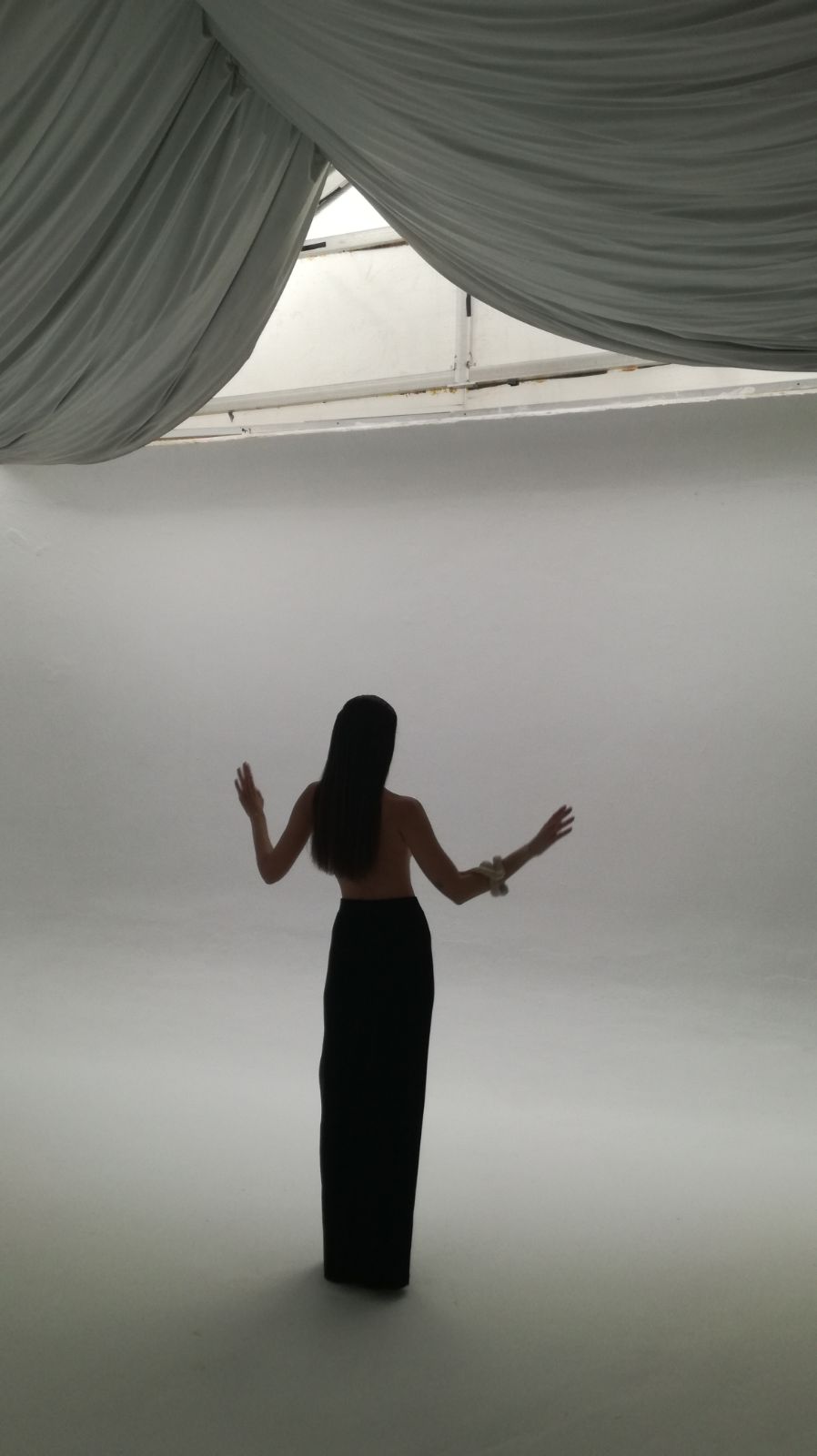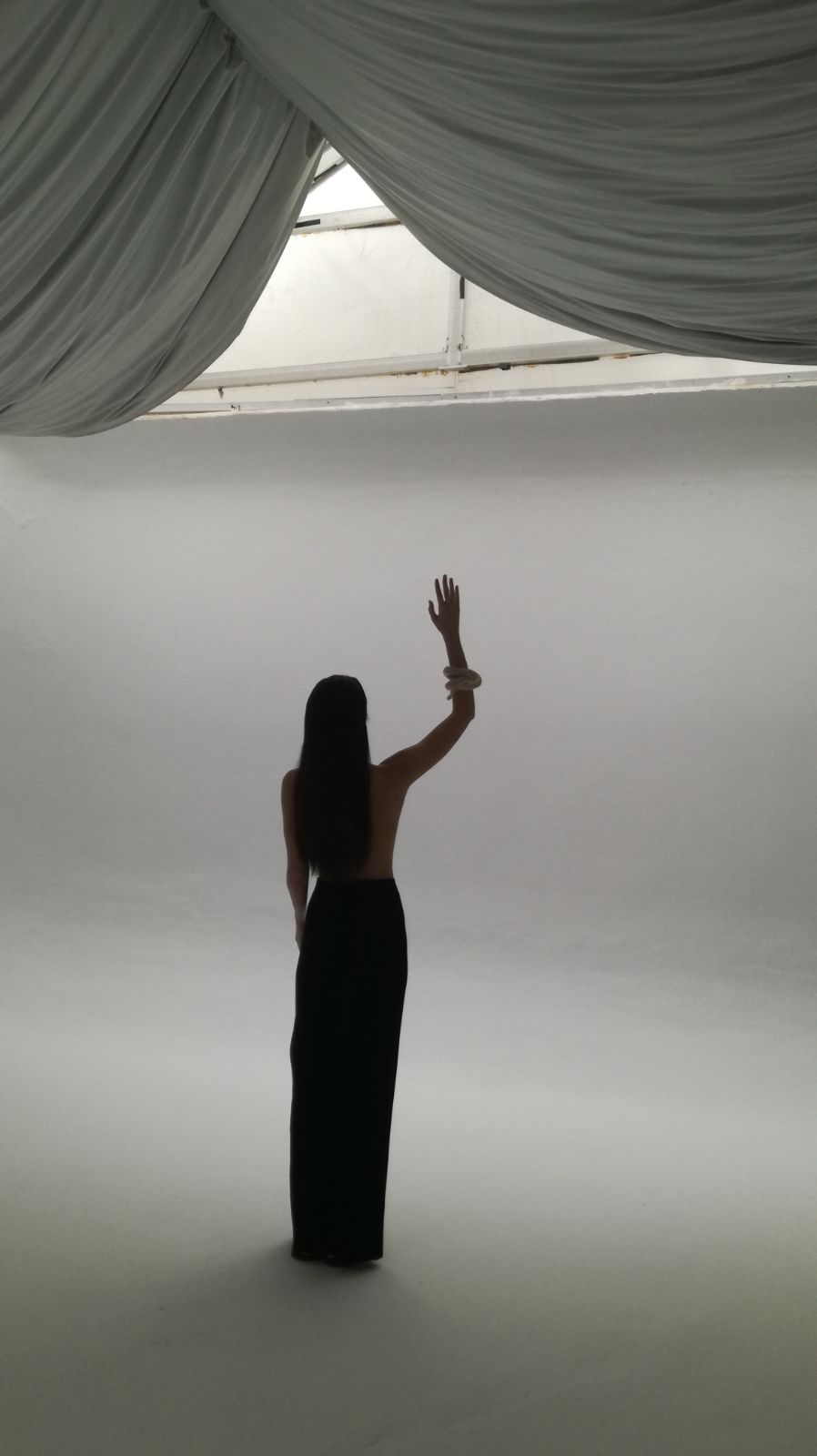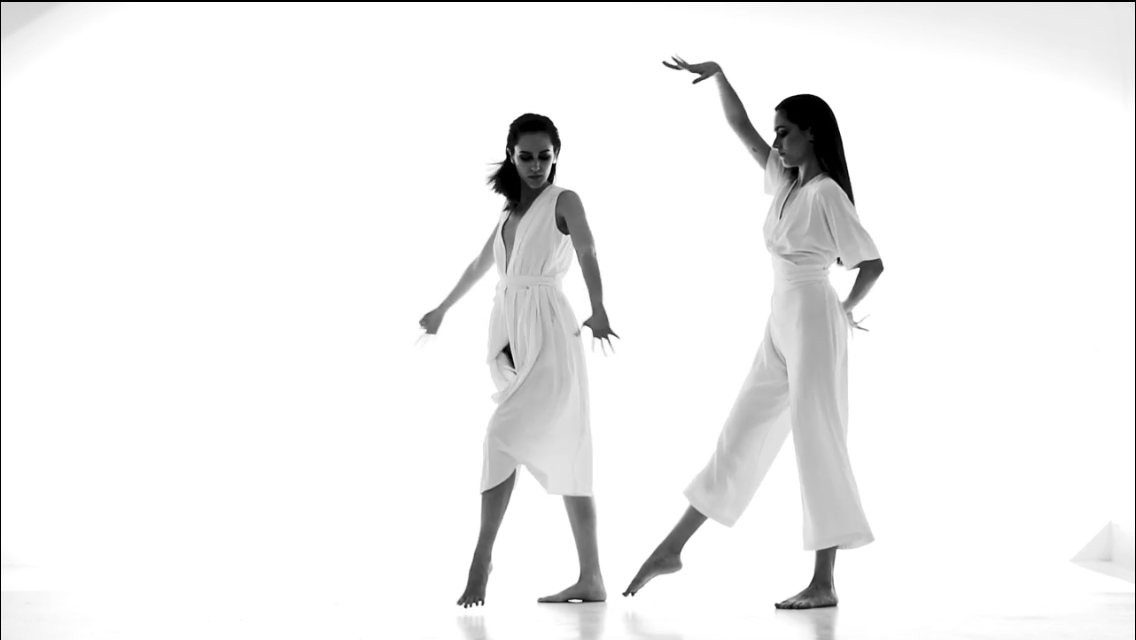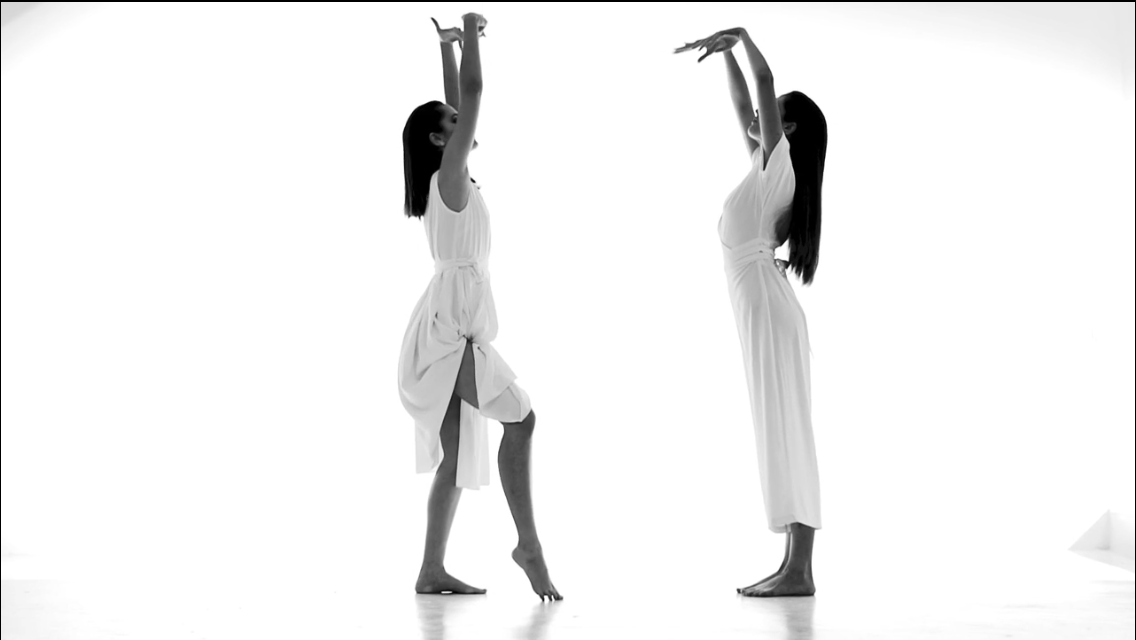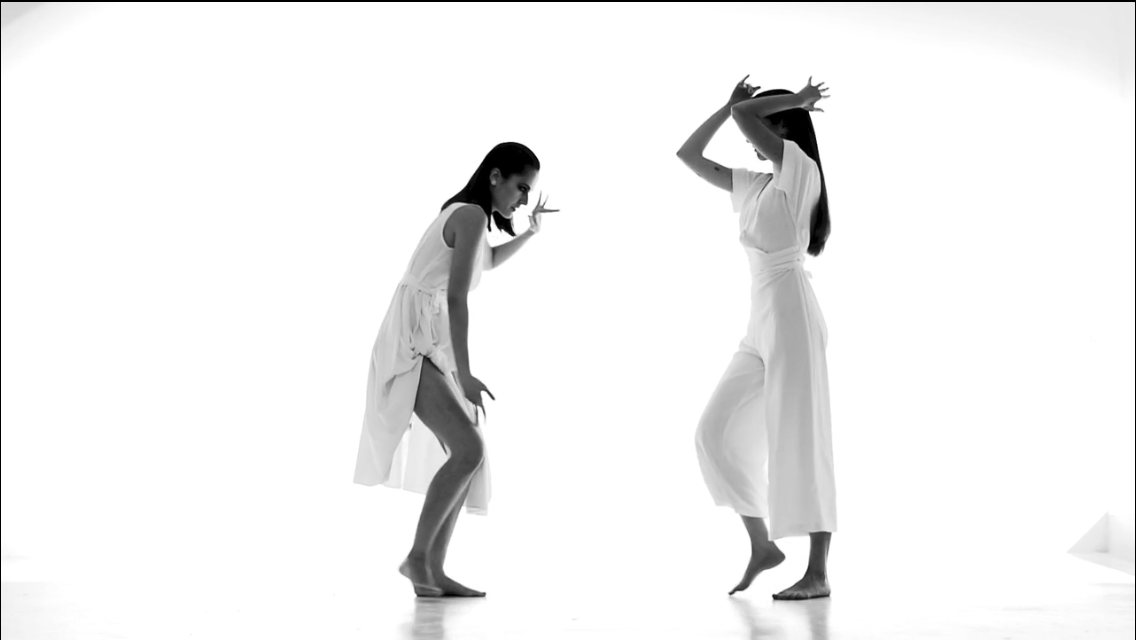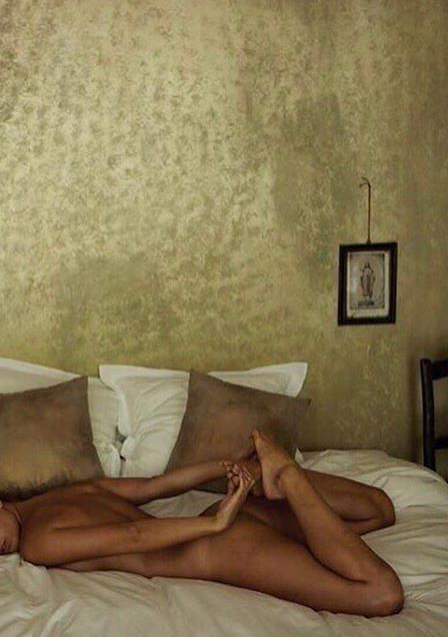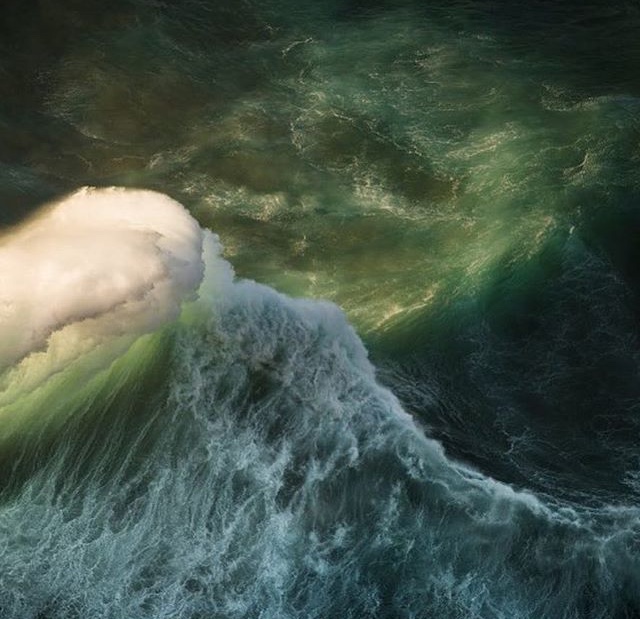En los vídeos se intenta reflejar los ciclos de la mujer, de los animales vinculados a ella y también a la luna de la mano de Miranda Gray. Una mujer que toma conciencia de su ciclo y las energías inherentes a él también aprende a percibir un nivel de vida que más allá de lo visible; mantiene un vínculo intuitivo con las energías de la vida, el nacimiento y la muerte, y siente la divinidad dentro de la tierra y de sí misma. A partir de este conocimiento la mujer se relaciona no solo con lo visible y terrenal, sino con los aspectos invisibles y espirituales de su existencia.
Fue a través de este estado alterado de conciencia que tenía lugar todos los meses como las chamanas/curanderas, y más adelantes sacerdotisas, aportaron al mundo y a su propia comunidad su energía, claridad y conexión con lo divino. La curación, la magia, la profecía, la enseñanza, la inspiración y la supervivencia provinieron de su capacidad de sentir ambos mundos, de viajar entre los dos y de llevar sus experiencias de uno a otro.
El incremento del dominio masculino en la sociedad y la religión hizo declinar la posición social de la chamana y la sacerdotisa hasta tal punto que los hombres terminaron por adoptar sus roles. El papel de la sacerdotisa fue tan fuertemente reprimido por la sociedad occidental que la actividad de la mujer y la religión estructurada terminó por desaparecer de un modo clandestino fue la posición de la adivina o bruja, que se convirtió en el último vínculo con las primitivas religiones matriarcales. La hechicera de la aldea era una experta en la magia de la naturaleza, la curación y las relaciones entre personas, y tenía la capacidad de interactuar con las estaciones, su propio ciclo menstrual y su intuición; ayudaba y guiaba a sus semejantes en lo concerniente a la vida y la muerte, actuaba como iniciadora y transformadora valiéndose de los rituales de transición y dirigía las ceremonias extáticas que llevaban a la unión, la fertilidad y la inspiración a su pueblo.
Estas mujeres simbolizaban el equilibrio de la conciencia y las energía femeninas dentro de una sociedad y una religión dominadas por los hombres, pero como desafortunadamente estos poderes representaban una clara amenaza para la estructura masculina, durante la época medieval de las persiguió sin tregua hasta virtualmente destruir la tradición.
The videos try to reflect the cycles of the woman, of the animals linked to her and also to the moon of the hand of Miranda Gray. A woman who becomes aware of her cycle and the energies inherent in him also learns to perceive a standard of living beyond the visible; she maintains an intuitive link with the energies of life, birth and death, and feels the divinity within the earth and itself. From this knowledge the woman relates not only to the visible and earthly, but also to the invisible and spiritual aspects of her existence.
It was through this altered state of consciousness that took place every month as shamans/healers, and more advanced priestesses, brought to the world and to their own community their energy, clarity and connection with the divine. The healing, magic, prophecy, teaching, inspiration, and survival came from their ability to feel both worlds, to travel between the two and to bring their experiences from one to another.
The increasing dominance of men in society and religion led to the decline of the social position of shamana and the priestess to such an extent that men ended up adopting their roles. The role of the priestess was so strongly repressed by Western society that the activity of women and the structured religion ended up disappearing in a clandestine way was the position of the fortuneteller or witch, which became the ultimate link with the early matriarchal religions.The village sorceress was an expert in the magic of nature, healing and relationships between people, and had the ability to interact with the seasons, her own menstrual cycle and her intuition; He helped and guided his fellow men concerning life and death, acted as initiator and transformer, using the transitional rituals, and conducted the ecstatic ceremonies leading to union, fertility and inspiration to his people.
These women symbolized the balance of female consciousness and energy within a society and religion dominated by men, But since these powers unfortunately represented a clear threat to the male structure, during the medieval era he pursued them relentlessly until virtually destroying the tradition.
Una de las primeras ideas que expresó la humanidad fue el concepto de la luna como fuente del espíritu creativo, noción que algunas culturas aún está vigente, además de formar parte de la leyenda y la mitología. El vículo entre la creatividad de la mujer y la luna aparecía en el ciclo repetitivo de energías que cambiaban de forma y aspecto a lo largo del ciclo menstrual y le permitían crear, es decir, hacer palpable lo impalpable: una idea, la comprensión entre el mundo tangible y el intangible, y se expresaba a través del intelecto, las emociones, la intuición, el subconsciente y el cuerpo, dependiendo de la fase que la mujer estuviese atravesando; así mismo se creía que tanto la creatividad como la sexualidad y la espiritualidad surgían del cuerpo femenino y sus ritmos, y que las energías creativas relacionadas con las sexualidad eran la base del ciclo menstrual que renovaba la vida una vez al mes. Muchas mujeres modernas se creen absolutamente incapaces de crear y en consecuencia se alejan de todo lo que califican creativo.
El arte puede ser cualquiera de las formas de expresión de las energías creativas; todas ellas tienen el mismo valor; si ahora definimos arte como el producto de la expresión de las energías creativas a través de las percepción de la vida y de la experiencia interior y física, entonces la división entre arte y vida desaparece y todos los aspectos de la vida se transforman en arte.
En el mundo moderno suele destinarse muy poco tiempo a la expresión creativa, para la mayoría de las personas no es una prioridad.
One of the first ideas expressed by humanity was the concept of the moon as the source of the creative spirit, a notion that some cultures are still in force, as well as being part of legend and mythology. The link between the woman’s creativity and the moon appeared in the repetitive cycle of energies that changed shape and aspect throughout the menstrual cycle and allowed her to create, that is, to make the impalpable palpable: an idea, the understanding between the tangible and intangible world, and expressed through intellect, emotions, intuition, the subconscious and the body, depending on the phase the woman was going through; likewise it was believed that both creativity and sexuality and spirituality arose from the female body and its rhythms,and that the creative energies related to sexuality were the basis of the menstrual cycle that renewed life once a month. Many modern women believe themselves to be absolutely incapable of creating and therefore move away from everything they qualify as creative.
Art can be any form of expression of creative energies; all of them have the same value; if we now define art as the product of the expression of creative energies through the perception of life and the inner and physical experience, then the division between art and life disappears and all aspects of life become art.
In the modern world very little time is spent on creative expression, for most people it is not a priority.
LAS IDEAS, LOS PENSAMIENTOS, LA IMAGINACIÓN SON CREACIONES DE LA MENTE QUE PUEDEN PLASMARSE EN EL LENGUAJE Y LA ESCRITURA.
IDEAS, THOUGHTS, IMAGINATION ARE CREATIONS OF THE MIND THAT CAN BE EMBODIED IN LANGUAGE AND WRITING.
La producción de los vídeos partió de la idea de mostrar la feminidad, desde la visión tripartita de la mujer. Al inicio una mujer salvaje con la que más nos identificamos, unida a la naturaleza y al mundo; en segundo un lugar la figura femenina sometida por la sociedad y sus roles; la tercera una mujer que ha roto con todo, cuya transformación está vigente en la actualidad. Feminismo.
El proyecto She And She nace de la Feminidad.. de nuestro propio concepto de todos los atributos que la rodean.. siendo nosotras las musas de dicha inspiración. Los vídeos no fueron completados ya que estamos en una constante evolución e iremos transmitiendo poco a poco cada paso dado.
The production of the videos was based on the idea of showing femininity, from the tripartite vision of women. At the beginning a wild woman with whom we most identify, united with nature and the world; secondly the female figure subjected by society and its roles; the third a woman who has broken everything, whose transformation is currently in force. Feminism.
The project She And She is born of the femininity.. of our own concept of all the attributes that surround it.. we are the muses of such inspiration. The videos were not completed since we are in a constant evolution and we will be transmitting little by little each step taken.

